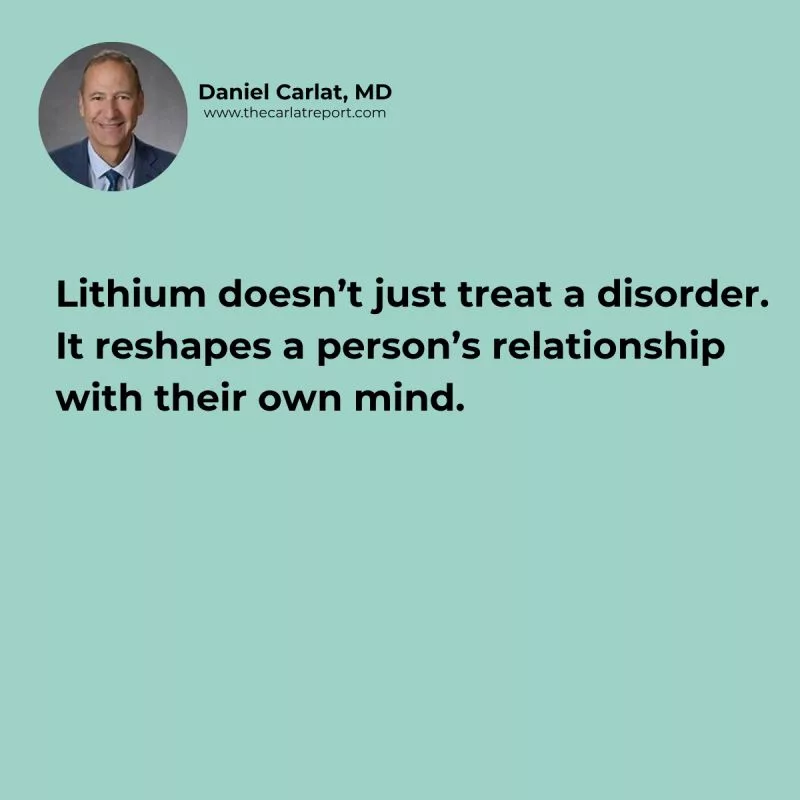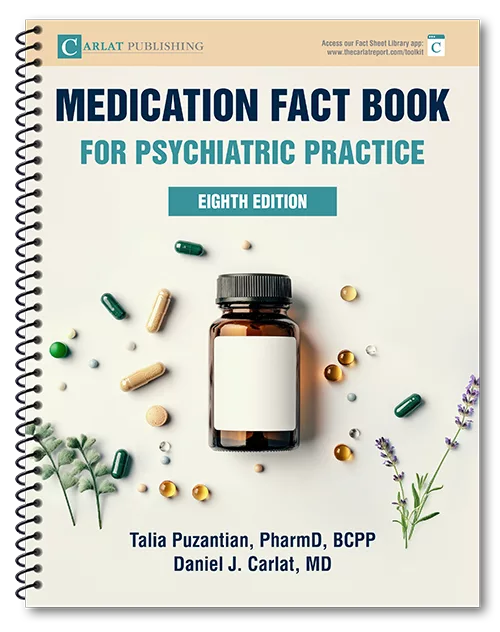That’s how one patient explained why he didn’t want to stay on lithium. He wasn’t denying the crashes. He just wasn’t ready to give up the highs.
Another described it differently:
“If you take too much of it you're slightly underwater, but if you take too little you're floating three feet above the water.”
Then he added, almost wistfully:
“When you stop lithium, your mind is suddenly sharp, you have lots of ideas—but then you get exhausted.”
We talk about lithium in terms of dosing ranges and renal labs.
But for patients, it’s often a trade.
Between vision and safety.
Between Superman’s vest and a life they can actually live in.
One of the first articles I ever wrote about bipolar disorder was titled “The Incredible, The Amazing Lithium.”
It ran in Volume 1, Number 8 of The Carlat Psychiatry Report—August 2003.
That was the only newsletter I published back then.
Even then, the drug felt larger than life.
Lithium’s origin story matches that feeling.
John Cade, 1949, injecting urine from manic patients into guinea pigs in a repurposed hospital kitchen.
He was trying to isolate a manic “toxin.”
He added lithium just to dissolve uric acid.
But it was the lithium—not the putative toxin—that calmed the animals.
Then it took years before anyone believed him.
Because lithium is a natural element, no company could patent it.
No one rushed to fund trials.
In the U.S., it wasn’t approved until the 1970s.
Still, it endured—not because of profit, but because it worked.
And yet, to this day, adherence remains one of the biggest challenges.
Insight fluctuates. Side effects erode trust.
And when the treatment dulls the very part of the mind a patient is most drawn to—it’s not just a medical challenge. It’s an existential one.
That’s why we’re working on a new article for The Carlat Report on how to make anti-manic treatments more tolerable.
It covers everything from selecting the least sedating agents and pre-treating for nausea or akathisia—to strategies for minimizing weight gain.
Because treating mania shouldn’t mean overwhelming the very patients we’re trying to help.
Lithium doesn’t just treat a disorder. It reshapes a person’s relationship with their own mind.
We’re revisiting that legacy in the upcoming piece.
But for me, it started back in 2003—with a single newsletter, a single article, and a single drug that still amazes me.
Join the conversation on LinkedIn with Dr. Carlat
Related Articles
- What Do You Say When a Pregnant Patient Asks If Her Medication Will Hurt the Baby? Author: Daniel Carlat, MD
- Generic Lurasidone Shifts the Balance in Bipolar Depression Author: Chris Aiken, MD
- Psych Meds That Cause Weight Loss? Yes, They Exist. Author: Chris Aiken, MD


_-The-Breakthrough-Antipsychotic-That-Could-Change-Everything.webp?t=1729528747)



